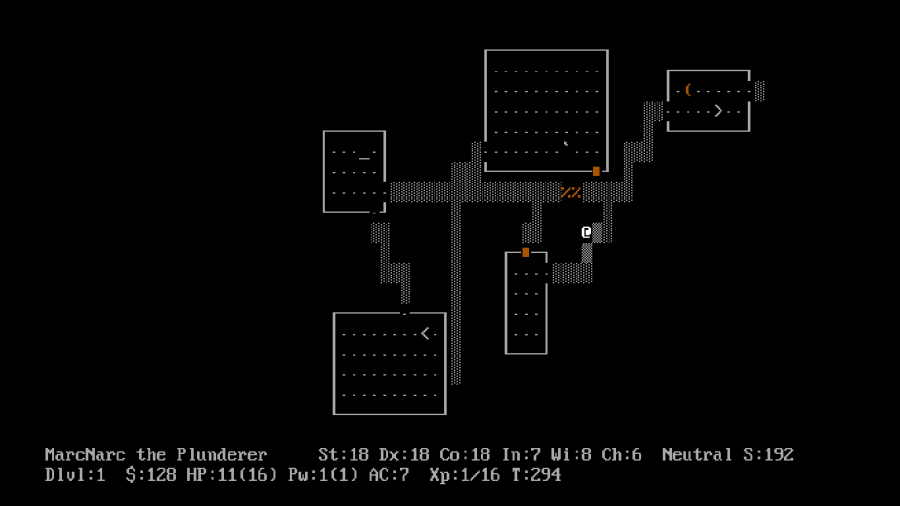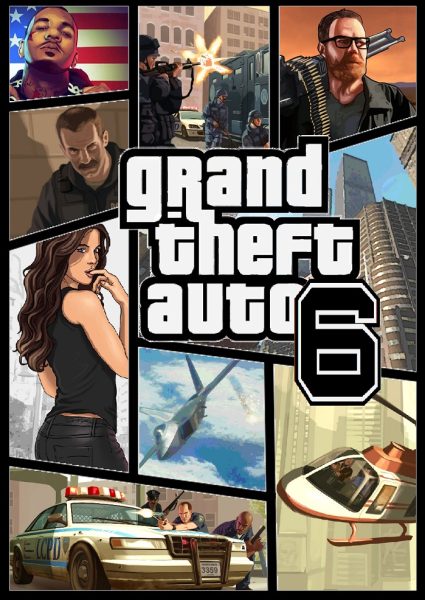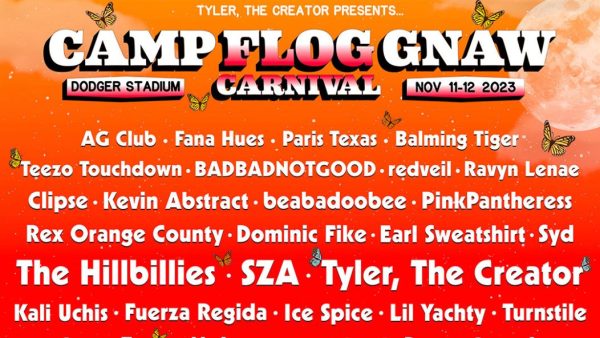What happened to single-player RPGs?
Revisiting the genre’s rise and fall
Screenshot from NetHack (1987)
October 23, 2019
Earlier this year, a server option known as World of Warcraft Classic for the MMORPG World of Warcraft was released that enabled players to experience the game as it was back in 2004. While a fun throwback, this gamemode doesn’t entirely encapsulate the genre’s single-player heritage, which goes all the way back to the 1970s.
Sadly, with the advent of online gaming, the single-player Role-Playing Video Game (RPG) genre is becoming obsolete in the modern gaming landscape.
Before we talk about RPGs in terms of video games, we have to know where the genre originally came from. Tabletop role-playing games are derived from wargames like chess and Risk, however these wargames have little resemblance to the RPGs that would derive from them. In 1972, Dave Arneson, a wargaming hobbyist, began working on a fantasy setting variant of the historic wargame Chainmail. This would be the first step in the development of the first ever tabletop RPG, Dungeons & Dragons. Dungeons & Dragons would be released in 1974, and introduced many elements associated with RPGs and MMORPGs, such as experience (XP) and leveling, hit points (HP), character development, and “dungeon crawl” scenarios.
Dungeons & Dragons would be successful enough to spawn video game adaptations of role-playing games, which is where the story of single-player RPGs truly began. The earliest known example of an RPG on a computer was programmed by University of Illinois student Rusty Rutherford in 1975, and it was referred to by the name Pedit5. Pedit5 is notable for introducing a mechanic that would become standard for RPGs, random encounters. Random encounters are what the name implies, enemies randomly attacking the player. However, Pedit5 was never released to the public, so the public had to wait until 1978 when Beneath Apple Manor (the first commercially available role-playing video game) was released to buy an RPG for their home computer.
Then, there were more. A lot more. Rogue, Ultima, Dragon Quest, NetHack, Wizardry, The Bard’s Tale, Megami Tensei, Ys, Hydlide, Phantasy Star, Might and Magic, SaGa, Earth Bound (not to be confused with EarthBound), and, most notably, Final Fantasy are some examples of RPGs released in the 1980s.
And so, the 80s came and went, and the 90s began. In the 1990s, technology became much more advanced, resulting in longer development time for video games of all genres, so releases became much less frequent, especially in the RPG genre. That being said, the 1990s are considered to be the best time for the genre, as RPGs of this time began focusing more on story rather than making new mechanics for gameplay. Final Fantasy VII, released in 1997, had a massive amount of content outside of the main story, known as side quests. If you wanted to complete the entirety of Final Fantasy VII, it would take 90+ hours to do so. Why is this important? Because these side quests would inspire developers to make a game that would be continuously updated with side quests via the internet. And what else is the internet used for? Multiplayer.
Meridian 59 was released on September 27, 1996, and is considered the first MMORPG to be released to the public. It didn’t do well in sales, which is probably why people haven’t heard of it. The publisher (Near Death Studios) stopped supporting the game in in 2010, so the original developers, Archetype Interactive, released the game completely for free in 2012. RuneScape, which was released in 2001, made MMOs somewhat mainstream after the relative failure of Meridian 59 and Ultima Online (the continuation of the Ultima series mentioned earlier). But RuneScape pales in comparison to the success of World of Warcraft.
World of Warcraft was released in 2004, and it put every other MMO at the time to shame. Its world was based on Blizzard Entertainment’s Warcraft strategy game series. The game did okay, if you consider “okay” to be the fourth best selling computer game ever, selling 14 million copies worldwide. But with success comes imitators.
In April 2005, Guild Wars was released, and it sold 6 million copies. It provided some early competition for World of Warcraft. In February 2006, another competitor came in the form of Dungeons & Dragons Online, based on the revised 3rd edition Dungeons & Dragons rules (v3.5). Because of the growing market, World of Warcraft had to adapt.
World of Warcraft: The Burning Crusade was the first expansion for World of Warcraft, released in 2007. It is notable because it isn’t a separate entry in a series. Rather, it’s an add-on to an existing game, an early form of DLC (Downloadable Content).
Expansions are now common for both MMORPGs and RPGs, especially in recent years. For example, in the Action RPG Diablo III, there are two expansions. The first expansion Reaper of Souls adds an “Adventure mode” which skips the game’s tutorial and main quests, but areas aren’t unlocked in this mode if they haven’t been unlocked in the Campaign mode. These expansions are how standalone games continue to create revenue for their publishers.
Diablo III was released in 2012, and it can be played as a single-player or multiplayer game. It isn’t an MMO, as its multiplayer can only support up to four players. Diablo III actually outsold World of Warcraft, being the third best-selling PC game. A third expansion for the game was planned, but Blizzard, the game’s publisher, focused development on World of Warcraft. Why? Because a new Diablo game will come out, because it’s not a constantly updated game like World of Warcraft is.
Expansion packs for a massive game that’s already been developed and updated are much more practical and convenient than having millions of players switch over to a whole new game made from scratch. With a sequel to a single-player game, the player gets a whole new experience just for them to experience.
Games like Diablo III take years to develop, so it would exhaust developers having to not only make an entirely new game from scratch, but to constantly update it as well. A more permanent experience like World of Warcraft is tailor made for small revisions and sizeable expansions, and that’s how it stays relevant. Single-player games don’t have the capacity of being permanent, because they’re usually telling a story that has a beginning and an end. So if there’s going to be more, then there might as well be a full-priced sequel.














Odyssey79 • Nov 21, 2019 at 9:33 pm
Nice, Addicting but hard. bad ice cream 3 on hudgames definetly one of the best games that i’ve played.